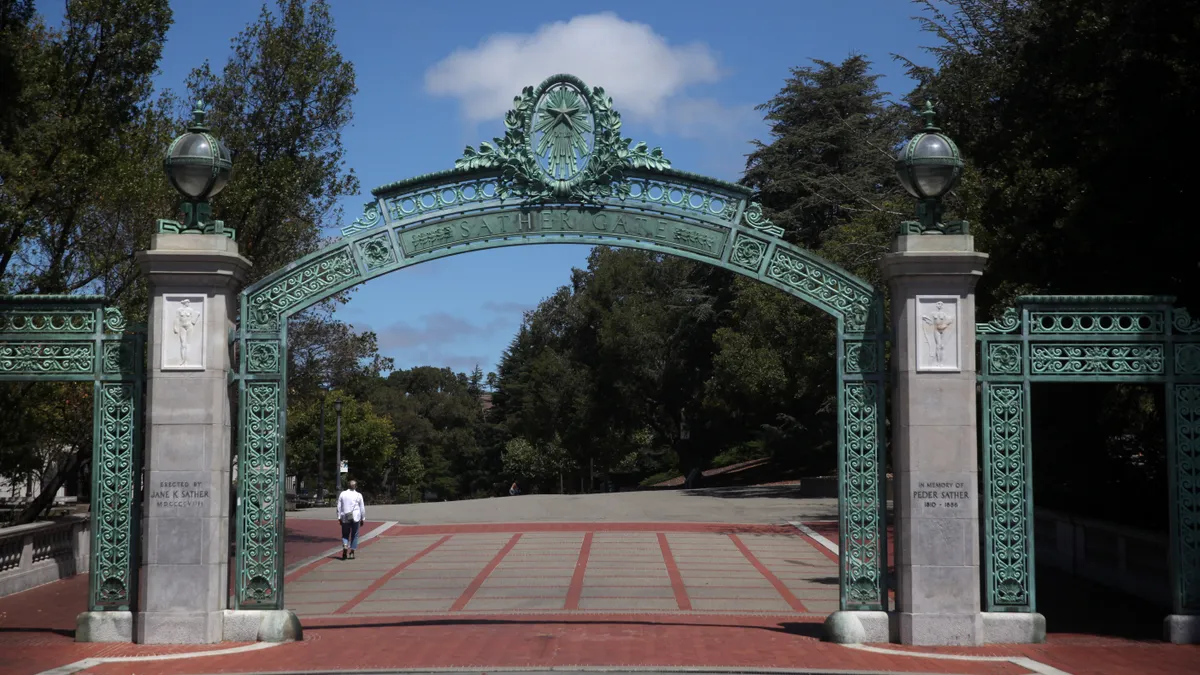Dive Brief:
- The University of California system is moving to increase its enrollment by 20,000 students by 2030, which would be a significant increase for the 286,000-student, 10-campus public university system.
- It's the equivalent of adding a new campus, the system's president, Michael Drake, said in a Board of Regents meeting last week. But the system wants to add the students at existing institutions, meaning it will need to pursue "strategic, organic growth" that matches the goals of individual campuses, Drake said.
- Strategies under consideration could include more online offerings, faster times to graduation and acquiring other institutions or campuses. A working group of campus chancellors and representatives from the system's office of the president will develop a plan to reach the goal.
Dive Insight:
The growth proposal can be seen as a reflection of the ways projected changes in populations, demographics and high school graduation rates will unequally affect colleges in different parts of the country — and in different parts of the same state.
Nationally, the number of high school graduates is expected to peak in 2025 and then begin a long modest decline as low birth rates from the Great Recession result in fewer traditional-age college students. California's population is expected to follow a similar arc.
But instead of falling, demand for attending UC's institutions is expected to increase as more students take college preparatory coursework and high school graduation rates rise, particularly among Hispanic and Latino students, the system's vice president for institutional research and academic planning told regents. The proposed expansion could allow the system to stress equity and grow to enroll student bodies that better reflect California's demographics, officials said.
The coming population and demographic changes are also expected to play out differently for various types of institutions. Generally speaking, selective and elite universities that recruit nationally — like those in the UC system — are expected to continue to be strong draws.
UC touted a record-breaking number of undergraduate applications for fall 2021. But the increases weren't felt evenly. First-year applications from California students seeking to attend UC Merced barely budged, going from 22,244 to 22,509. In contrast, at UCLA, first-year California student applications spiked from 67,877 to 84,148.
Some UC campuses face constraints on the number of on-campus students they can add. UC Berkeley plans to limit growth in the number of undergraduates it enrolls to 1% per year after local opposition to more aggressive expansion. That contrasts to UC Riverside, which has increased from 21,000 students to 26,000 students since 2013 and is aiming to grow to 40,000, the scale of other universities with which it sees itself competing.
Berkeley's chancellor, Carol Christ, called for planning to grow in "unconventional ways." Campuses that can't expand their physical footprint could consider satellite campuses on undeveloped land or adding a campus through an acquisition. Berkeley had been planning to enroll students at the private nonprofit Mills College's campus before Mills struck a deal to be acquired by Northeastern University.
Using summer sessions and university extension locations differently could also be options. So too could be decreasing the time it takes students to earn degrees and remote instruction, Christ said.
"I don't imagine fully online undergraduate degrees, but you can use online instruction to create more elasticity of place, allowing students to take, say, a semester or quarter remotely," Christ said.
Other considerations include growing graduate and Ph.D. enrollment at appropriate rates, which affects institutions' ability to educate undergraduates and conduct research. But capacity concerns have long followed the UC system. Student regent Alexis Atsilvsgi Zaragoza pointed out some campuses had to house students in hotels this fall because they were short on housing, raising the question of how the system can serve its current student population, let alone a larger one.















